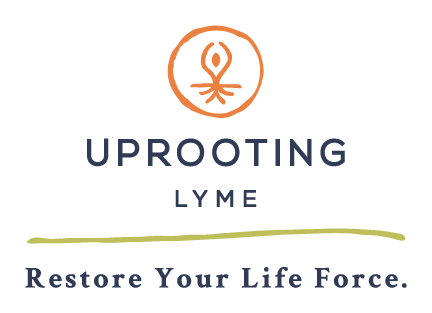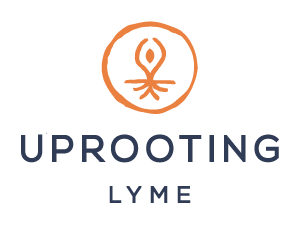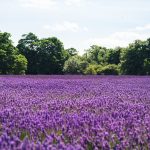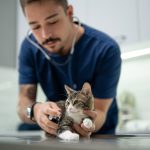
Introducing Kelsey Conger, Clinical Herbalist & Nutritionist
We’re excited to welcome Kelsey as a new Associate Health Practitioner to our team!
Kelsey brings a wealth of experience in Lyme, complex illness, and reproductive health, not to mention a passion for helping individuals achieve their health goals.
Enjoy the interview below conducted by our Clinic Manager Daisha Sen, where Kelsey shares more about her background, experience, and personal commitment to supporting patients.
Daisha: Thank you so much for sharing this deeper look into who you are, what’s brought you to this much needed work, and what your passions and specialties are within it. We look forward to our patients and clinic benefiting from your knowledge and care as a practitioner. Can you share a little bit about what brought you to this work and what inspires you?
Kelsey: My story isn’t unique, rather it’s one I think so many of us who have struggled with chronic illness can relate to.
Almost 11 years ago, shortly after moving to the Redwoods, I saw a little purple flyer posted at the back of my local coffee shop. It was an advertisement for an herbal medicine course that spanned several weeks. I thought to myself, “plants as medicine? sounds too good to be true…” I was skeptical, but in truth, it was the glimmer of hope that scared me most.
I’d spent most of my childhood struggling with mystery symptoms, including horrendous bouts of pain, crippling fatigue, and near-constant indigestion, and had undergone years of unpleasant and invasive testing with little in the way of explanation. Over time I learned that my symptoms were better kept to myself because no one truly had answers. Eventually, I became fed up and realized the only way things would change was if I dedicated myself wholly to learning everything I could about how to heal.
So, my first two years of college were spent with my head in books and my hands mixing, chopping, and preparing traditional foods in the kitchen. I got to know local farmers, dairies, butchers, and completely transformed my understanding of nutrition and holistic approaches to healthcare. By the time I was twenty and came upon this flyer for a beginner’s herbalism course, I knew that I had stumbled upon something special (even though I was hesitant to believe it).
I spent the next two years living in a cabin in the middle of the forest, where I took classes from and studied under Jane Bothwell of the Dandelion Herbal Center. My time there changed my life forever. I continued my education and training throughout my twenties, slowly learning how to manage my persistent health issues and become more connected to my heritage and nature itself.
I wanted to gain experience in a variety of background and settings, from forest, field, and farm, to apothecary and pharmacy. Despite pursuing a career in holistic healthcare, specifically herbal medicine and nutrition, and seeing massive improvements in my health, I still was struggling with persistent symptoms.
I was committed to figuring it out once and for all. I left the farm I was managing in Colorado and came home to San Diego, in hopes of finding an integrative healthcare team who might be able to help. After extensive searching and testing, I finally found answers when I tested positive for Lyme disease, Bartonella, and a few other severe coinfections. I couldn’t believe I had been living with these infections for so long!
Unfortunately, as anyone with Lyme knows, things got a lot worse before getting better. The integrative physicians who diagnosed me prescribed antibiotics that caused a severe herx reaction, leading me to become mostly disabled and bedbound. Overnight, I went from riding horses to being unable to stand more than a few minutes at a time. Again, I knew something wasn’t right and began looking for a practitioner who emphasized detoxification and a more holistic, ecological approach to recovering from Lyme. Thankfully I found an incredible herbalist and mentor to support me in recovery who had 30 years of experience with Lyme and chronic infectious diseases – Hillary!
Now on the other side and feeling better than ever (!), I’ve earned an MS in Clinical Herbal Medicine and PMC in Integrative Nutrition. I’m currently completing a Doctorate in Clinical Nutrition and finishing up two clinical mentorships focused on Lyme and Fertility. I’ve spent the entirety of my graduate studies focused specifically on researching and understanding Lyme disease, coinfections, and co-occurring conditions more deeply.
Daisha: Are there any particular areas within the realm of complex illness that you enjoy specializing in?
Kelsey: Yes, within the realm of complex chronic illness, there are a few areas I specialize in due to both personal and professional experience:
Autoimmunity
Children + Teens
Chronic Infections
Dysautonomia (POTS)
Gut Health (Celiac, Crohn’s, IBS, IBD, SIBO)
Hypermobility
Neurodivergence (ADHD, OCD, Autism)
Thyroid Health
Women’s Health (PCOS, endometriosis, fibrocystic breast disease, amenorrhea, dysmenorrhea)
I also specialize in optimizing fertility, hormonal, and reproductive health. With women, this includes working with the Symptothermal (Fertility Awareness) Method.
For those who are interested in learning more, I share educational content on my instagram and through my podcast, as well as teach classes both in-person and online about herbalism, traditional nutrition, and nature-connected living.
My greatest passion is empowering my clients to lay the foundations for long-term health, vitality, and well-being. I know what it’s like to suffer from Lyme and undiagnosed chronic illness for years, even decades, without support or relief. I don’t want anyone else to go through that! That’s why I’m wholly dedicated to supporting patients and my community for the long-haul.
Daisha: Is there anything you’ve learned as a practitioner that’s shaped or reshaped the ways in which you support your clients?
Kelsey: Getting diagnosed with Lyme disease and coinfections took far longer than it should have. I’m sure some of you reading this can relate. Testing is complicated if you even know to get tested, and frankly, I was lucky to test positive. Growing up here in San Diego, nobody talks about Lyme! I frequently hear the claim that Lyme only exists in the northeastern US, but this is a complete myth. Lyme is widespread, and it is absolutely something to be aware of here in San Diego. In fact, the last two tick bites I had were just from gardening in my backyard!
Once I was diagnosed, treatment was no easy road. Until COVID came along, a huge portion of the medical community refuted the existence of chronic Lyme disease and latent infections. This was despite evidence to the contrary and most importantly, patients’ firsthand experience. The CDC only recently added a page to its website on chronic symptoms from Lyme disease, which is estimated to occur in around 20% of people who are immediately treated with antibiotics. However, many people never are diagnosed and treated in the first place.
Secondly, my initial Lyme treatment led to severe herx reactions which caused an enormous setback. This was one of the biggest struggles on the road to recovering from Lyme disease and has fundamentally shaped how I practice clinically. Many insist that herxing is part of the process of eradicating the infection and that patients need to “push through the pain”, but I disagree entirely. There’s a large body of evidence showing that herx reactions can be harmful and should be avoided. This is exactly why I do the work that I do now. Not only do I know that it’s possible to recover from chronic Lyme, but it’s possible to recover with minimal herxing.
Daisha: What is one of the most helpful tools or steps you’ve found for supporting people when they’re feeling stuck or experiencing a health setback?
Kelsey: I think one of the most powerful tools that anyone can incorporate into their everyday life is doing enemas. While at first they can seem a bit uncomfortable and unfamiliar, once experienced they quickly become an easy, reliable, and rapid form of relief that greatly accelerates the healing process.
When treating chronic Borreliosis and coinfections, these microbes can become widespread and deeply embedded within the tissues of the body. As these microbes proliferate, they release endotoxins which cause the symptoms of Lyme. When a patient with these infections is given antibiotics or antimicrobials that kill the microbes, essentially causing them to lyse/explode, all their endotoxins are released at once. This floods the body with a significant amount of endotoxins, which then triggers the release of inflammatory cytokines, and ultimately worsens the person’s symptoms. This die-off reaction is called the “herx” or Jarisch-Herxheimer reaction.
Enema’s are my go-to form of colon cleansing, because once you’ve invested in the kit they can be performed at home, for free, in the comfort of your own bathroom. As you progress, you can even begin using herbal teas and coffee instead of plain water to support the process of releasing endotoxins and restoring bodily function.
Daisha: Is there any specific step you would recommend to someone in preparing for their first consultation and supporting their empowerment on their health journey?
Kelsey: I think the most important thing to share with those who are beginning or continuing on their healing journey with Lyme has to do with mindset. There are tons of helpful resources available on Uprooting Lyme, through other trustworthy sources, and many success stories from chronic Lyme patients. The answers and tools are already out there, but deep down, we have to cultivate an inner belief that we are capable of healing.
The most powerful approach I’ve experienced for cultivating this belief is reconnecting to nature. Whether it be sitting outside with your feet in the grass, birdwatching from your balcony, going for walks down your street, basking in a few minutes of sunshine, or drawing local plants, developing a connection to our local ecosystems is a profoundly healing experience. The air, light, water, and natural elements have the ability to soothe our nervous system and improve mood, digestion, immunity, and more.
The first evidence of Borrelia bacteria dates back 15 million years. That means just like the plants, we evolved in the presence of this bacteria. This is wonderful news! It means that our job has never been eradicating the bacteria or infections entirely, it means learning how to live in balance with them. When we begin to work with the body and with nature, healing becomes inevitable. Our bodies are a direct reflection of the ecosystems we inhabit, and just like this earth, our bodies know how to heal.
Daisha: Could you share some insight into the importance of supporting the digestive process and how it relates to chronic infections and other chronic inflammatory conditions?
Kelsey: The gastrointestinal (GI) system is one of the major interfaces with our inner and outer worlds. In chronic infections like Lyme disease, as well as chronic inflammatory conditions, it is one of the first systems of the body to take a hit. This happens for numerous reasons. Both inflammation and infectious organisms can directly hinder GI function and cause damage to organs like the stomach and intestines. Additionally, when pharmaceuticals are prescribed these can cause further damage by disrupting the microbiome. This can ultimately lead to a snowball effect, with inflammation continuously elevating as food is not properly broken down and immune reactivity increases.
If a creek becomes filled with moss, sticks, and mud, to the point it can no longer flow, what happens? The water sits still, becomes muddied and cloudy, and can even take on a foul smell. Things may begin growing in the water that are toxic to wildlife or swimmers. This is very similar to what can happen in our guts!
Because chronic illness and Lyme are often associated with a high level of toxicity, this increases the burden on the digestive system to eliminate and get rid of all the body’s waste. If we become backed up and aren’t eliminating effectively, the body becomes filled with stagnant toxins and waste which greatly increases our symptom burden. These toxins aren’t always necessarily the result of infectious organisms, they can also be ordinary metabolic byproducts of our immune system, our hormones, inflammatory markers, and other compounds.
Thankfully, we can do so much to support and cultivate healthy digestion with herbs, nutrition, and lifestyle practices! This is where the Uprooting Lyme approach really shines, as we never are required to engage in practices that compromise the health of our gut, which truly lays the foundation for optimal function and vitality.
Daisha: Is there anything else you’d like to share with us?
Kelsey: I think I’ve said enough! If you’ve made it this far, thank you so much for reading along. I am honored to be joining the Nourishing Life Health Center and greatly look forward to working with you!






What town is Kelsey from, as I was going to try to submit an announcement in the BlueStone Press that she has joined your staff. Thanks.
Hi Donna!
Kelsey is actually located in San Diego, California. She provides tele-health services to clients for those who can’t come to the clinic in person. It’s nice to hear from you and I hope you’re well!
This is really really wonderful that Kelsey is on board. I’m not sure it’s entirely fair to call such a negative experience w antibiotics a Herx response but I suppose it doesn’t harm the person that has already experienced it.